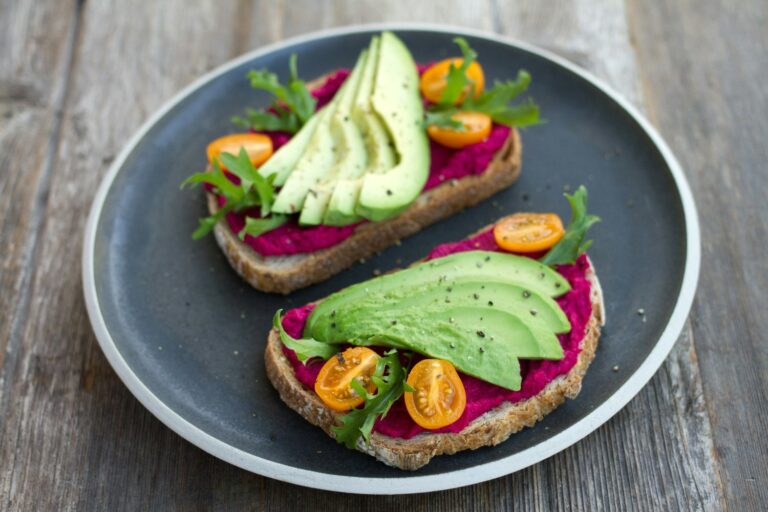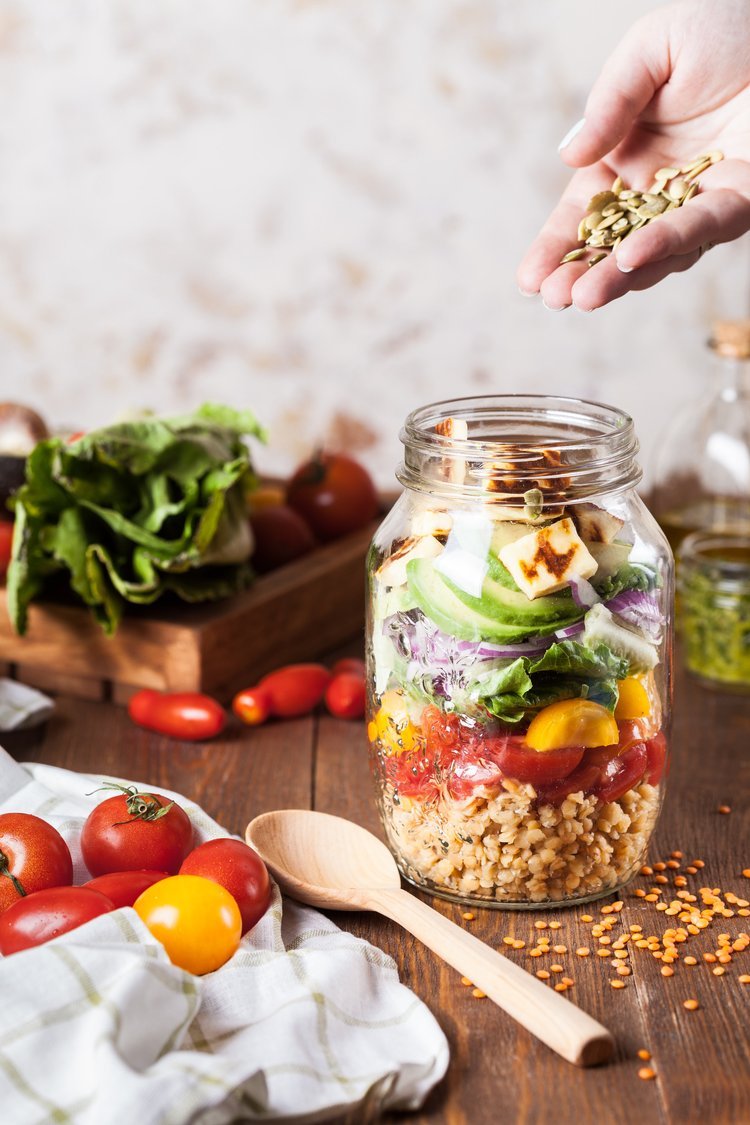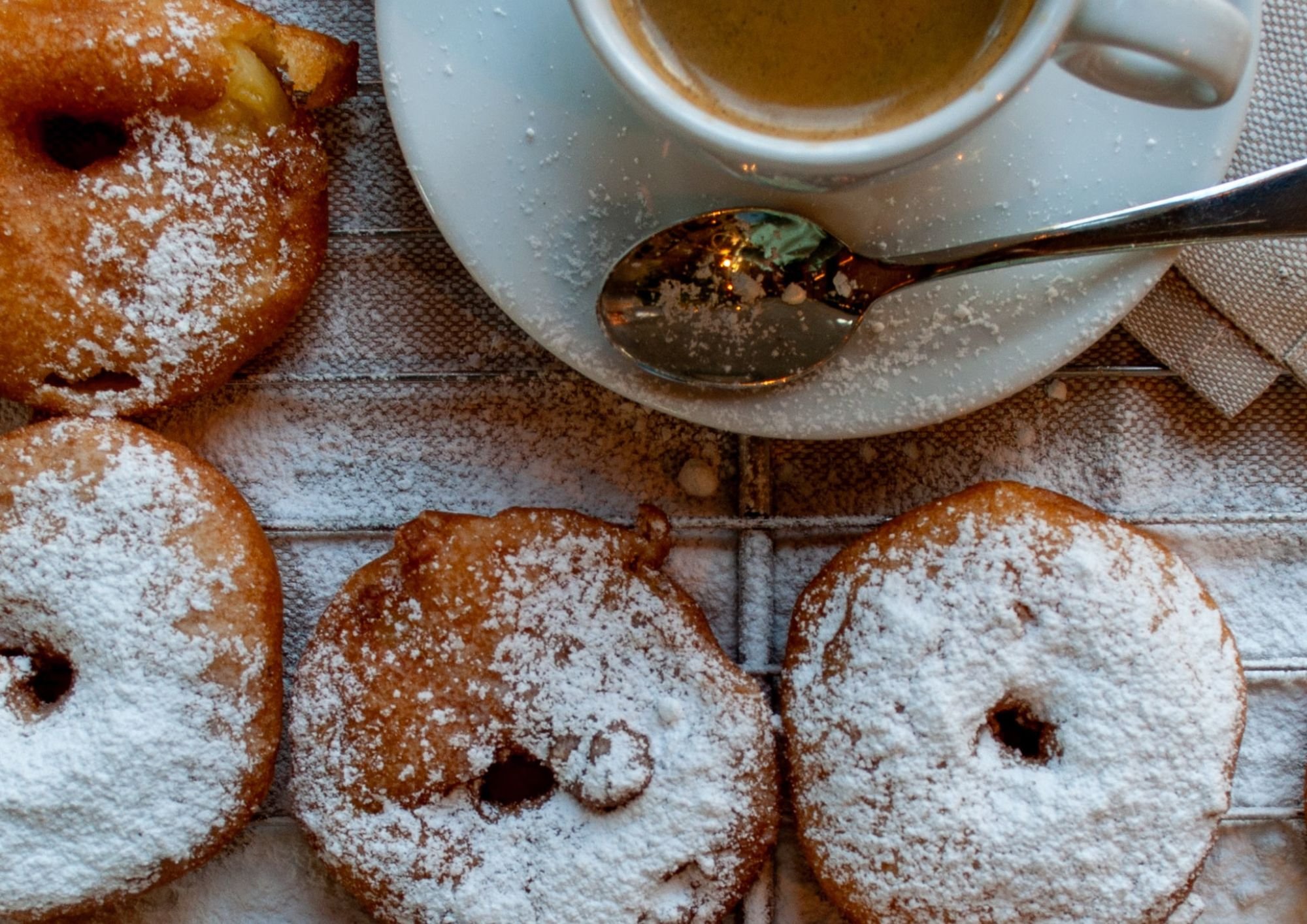
Balance Your Blood Sugar Naturally
Are you feeling overwhelmed by all the conflicting advice about sugar? You’re not alone!
With so much buzz about sugar, carbs, fruit, and artificial sweeteners, it’s easy to feel confused.
Is sugar inherently bad? Should you avoid fruit because of fructose? Are carbs just sugar in disguise? And what’s the real story with artificial sweeteners?
And most importantly does sugar impact your health? How can you balance your diet (and blood sugars) for optimal wellbeing?
Here’s the good news: once you dig into the science, it’s not as complicated as it seems. In fact, it’s surprisingly straightforward! Nutrition doesn’t have to be confusing, and food is meant to be enjoyed—not feared.
In this article, we explore the science behind sugar and carbohydrates, the differences between refined and complex carbs, and their effects on the body, plus how much sugar is actually OK. You’ll also find practical tips for reducing sugar intake, optimising your blood sugar levels naturally, and embracing a balanced diet (without restricting) to support long-term health and well-being. Whether you’re looking to make small changes or embark on a major dietary overhaul, this guide offers insights to help you make informed decisions.
Why should we worry about sugar in the first place?
In today’s fast-paced world, sugar and refined carbohydrates have become staples in many diets. However, their overconsumption is linked to a range of health problems, including obesity, type 2 diabetes, heart disease, and even mental health issues like anxiety and depression. They also contribute to lesser known issues, such as chronic inflammation; liver disease; and even premature ageing!
These health concerns largely stem from the impact of excess sugar and refined carbs on blood sugar levels, which can cause energy crashes, cell damage, mood swings, and a cycle of cravings that is hard to break.
Balancing blood sugar is crucial for maintaining overall health, as it helps stabilize energy levels, support a healthy metabolism, and prevent chronic illnesses.
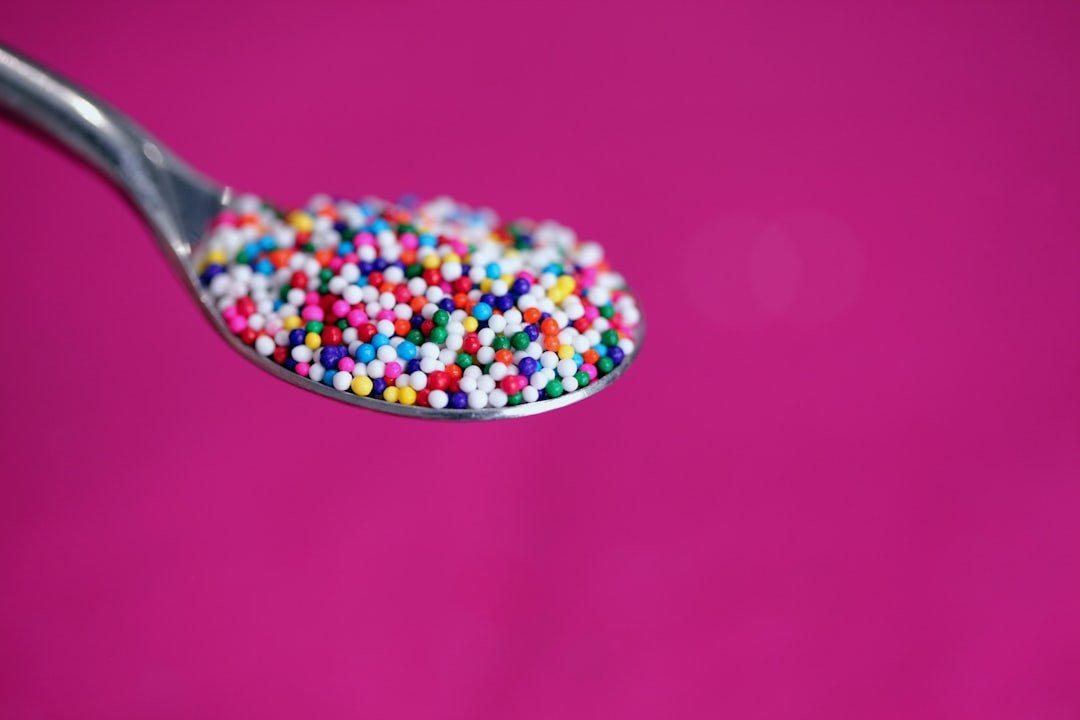
The history of sugar – why our modern world is killing us
For most of human history, diets were rich in fiber, whole plant foods, and slow-digesting complex carbs. These natural, unprocessed foods came packed with nutrients, including vitamins, minerals, and antioxidants, while also supporting our gut microbiome and providing steady energy for our cells. Think seeds, nuts, legumes, whole grains, and root veges.
But things began to change with modern food processing. Once we learned how to refine foods, strip away fiber, and add sugar to make them sweeter, the balance shifted. This shift is reflected in the skyrocketing rates of diabetes and other chronic diseases we see today.
Did you know that over 70% of prepackaged foods now contain added sugar? The situation is even worse in products marketed to babies and children, where sugary snacks dominate the shelves.
Adding to the problem, the push for “low-fat” products in the name of heart health led manufacturers to replace fat with sugar to maintain flavor. As a result, sugar consumption has exploded in recent decades.
In just 300 years, our sugar intake has risen dramatically—from 1.8 kg (4 lbs) per person per year to a staggering 68 kg (150 lbs) per person per year. 😮 This massive increase is directly linked to the rise of processed and convenience foods that prioritize taste over nutrition.
The World Health Organization (WHO) strongly recommends that adults should limit ‘free sugar’ intake to less than 5 per cent of calories per day. That’s about six teaspoons.
In grams, this works out to a MAXIMUM of 24g per day of added sugar for women; 36g/day for men, and 24g/day for children aged 12-18.
Yet the average US adult consumes around 22 teaspoons (88g) of added sugar per day (with men and teenagers consuming the most), and it’s thought that New Zealand is probably not far behind.
The majority of this is from sweetened drinks such as soft drinks, fruit juices, and energy drinks – a massive 47% to be exact. A further 31% comes from snack foods and sweets.
It’s clear that the way we consume sugar today is far removed from how it was traditionally enjoyed—sparingly and as part of whole, natural foods.
Let’s dive into the science next
To understand more about why and how sugar impacts us, let’s start with the basics: what is sugar, anyway?
The term “sugar” isn’t as straightforward as you think. When most people refer to sugar, they’re thinking of sucrose (or table sugar). In reality though, sugar refers to a group of basic molecules. These come in two main types:
- Monosaccharides (single sugar molecules) like glucose, fructose, and galactose.
- Disaccharides (two sugar molecules linked together) like sucrose (table sugar) and lactose (found in milk).
You can see the difference (and compare them), via the table below.
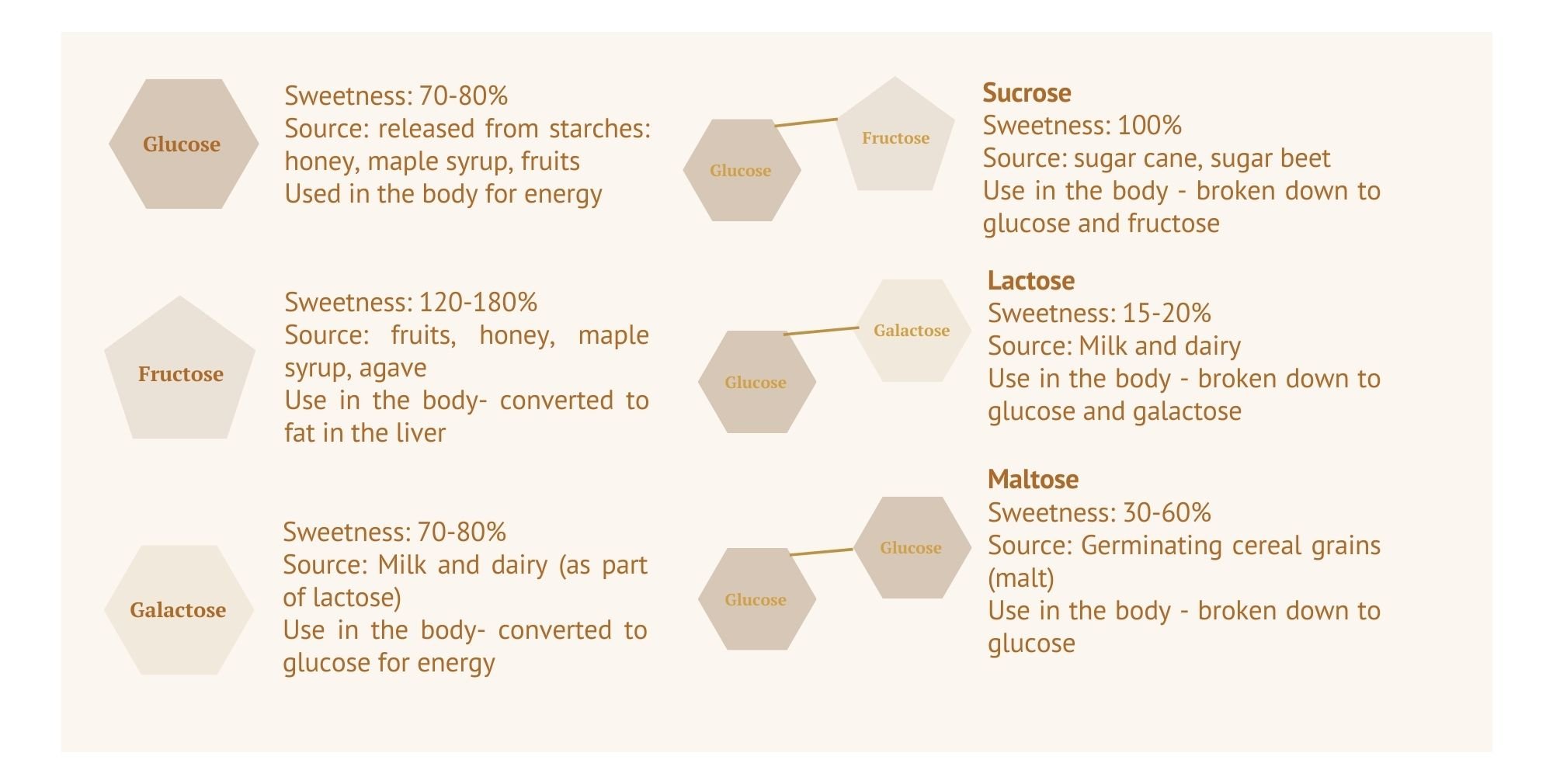
What about carbs?
Carbohydrates are actually our body’s primary preferred source of energy, and the main way we fuel our daily activities. They are a crucial category of nutrients found in various foods. Carbs are made from multiple sugar molecules joined together (mostly glucose), even though they don’t always taste sweet!
Did you know if you put a piece of white bread in your mouth and chew it without swallowing for over a minute it will start to taste sweet? That is because the enzymes in our saliva are starting to break apart the carbohydrate bonds into simple sugar. How crazy is that!
All sugars are technically carbohydrates, but not all carbohydrates are called sugars – it depends on their chemical structure. Confused yet?
This is because carbohydrates exist as two main types: simple and complex. These both mostly get broken down into sugar molecules when we digest them, but here are a few key differences between them:
- Simple carbohydrates are made up of short chains of sugar molecules joined together, that have fewer chemical bonds between them. This means your body can quickly break them down into sugar and absorb them into your bloodstream for energy. Simple carbohydrates also include the sugar molecules we talked about in the last section.
- Complex carbohydrates are longer, more intricate molecules that take your body more time and effort to digest, providing a slower, steadier energy release. They can contain thousands, or even millions of glucose molecules joined together, and their size and complexity make them much slower to digest – leading to a more sustained release of energy over time. Some of the most common complex carbs are starch, fibre, and glycogen. Although these are made from sugar molecules, they are not called sugars, as they are structurally much more complex.
The main difference here from a health perspective, is that COMPLEX and SIMPLE carbs are broken down and absorbed very differently – meaning they also have very different effects on our body, despite being made up of the same basic sugar molecules.
There are also a couple of other factors at play that influence how our body processes carbs and sugars.
This is whether the carbohydrates are REFINED or WHOLE (non refined); and whether the sugars are INTRINSIC or FREE. Don’t worry, we’ll explain this next!
REFINING: When carbs are refined—like turning brown rice into white rice, or brown flour into white flour—the process strips away fiber and many nutrients. Fibre is a complex carbohydrate that our bodies cannot digest, and it helps slow down the digestion and absorption of sugars significantly. Since fiber slows digestion, foods without it are absorbed more quickly, leading to rapid blood sugar spikes.
In contrast, whole (non refined) grains (like brown rice or whole wheat flour) retain their fiber, which helps stabilize blood sugar levels and keeps you fuller for longer. Whole grains are also way higher in many essential nutrients such as B vitamins and magnesium – so they’re great to include as part of a balanced diet!
TYPE OF SUGAR: There are two main types of sugar found in our diet – intrinsic vs free sugars.
Intrinsic sugars, means sugars that are found naturally in whole foods like fruits. These provide a steady source of energy and help maintain a stable metabolism. Similar to whole grains, this stability is largely due to the presence of fiber, which slows down how quickly we absorb these sugars, ensuring a gradual release of energy into the bloodstream. While they still count as a sugar, research shows they can provide a valuable source of energy, with no negative health impacts.
In contrast, free sugars—such as sugars added to food (like table sugar or honey) or sugars in foods where the fiber has been removed (e.g., fruit juices, syrups, fruit juices and fruit juice concentrates.)—are absorbed into the bloodstream at an much faster rate. Again this is largely due to the absence of fibre ‘binding’ up the sugar molecules.
What this means in essence, is that we don’t have to cut out carbs or sugar from our diet – we just need to eat them in the right form – in whole foods!
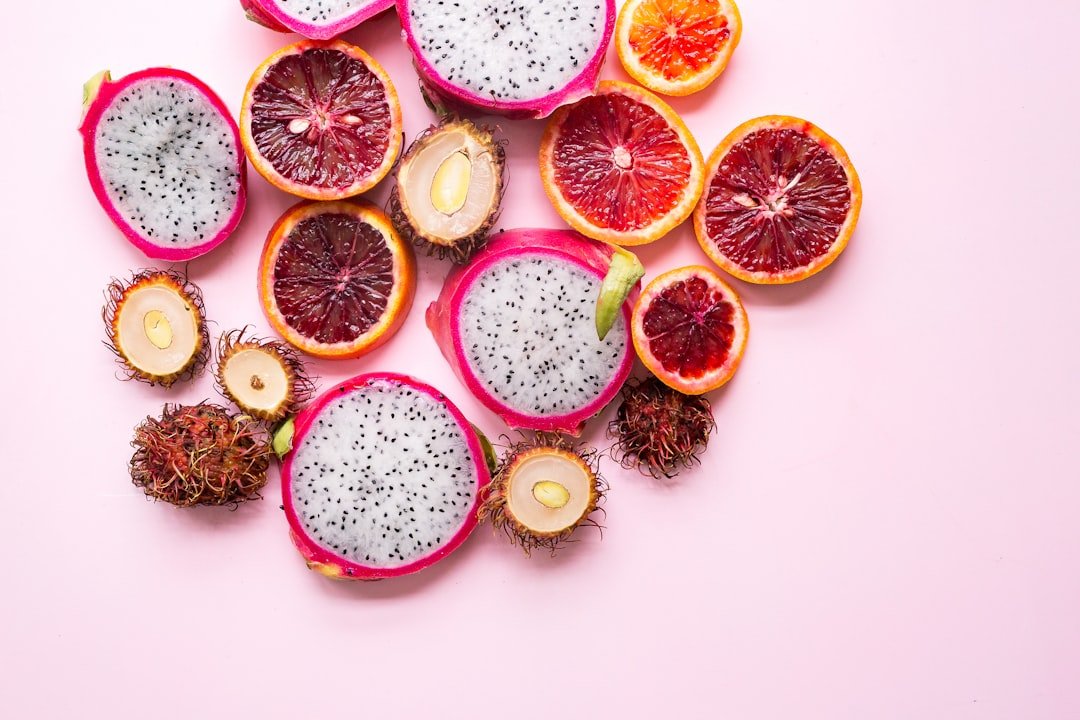
A Dive Into How Our Body Processes Carbs
So, now we’ve explored what sugar and carbs actually are, lets take a closer look at exactly what happens in your body when you eat them, to help understand the importance of choosing carbs wisely.
For your body to use sugar or carbohydrates as energy, they must first be broken down. Here’s how it works:
- Digestion & Absorption: Your digestive system breaks carbs and sugars into single sugar molecules like glucose. These molecules are then absorbed into your bloodstream through the intestinal wall.
- Insulin’s Role: Once glucose enters your blood, your body releases the hormone insulin. Insulin acts like a key, allowing glucose to move from your blood into your cells, where it’s used for energy.
- Energy Production: Inside your cells, tiny structures called mitochondria—your body’s energy factories—use glucose to produce energy. Glucose is their preferred fuel!
- Storage for Later: Any extra glucose your body doesn’t need immediately is stored in the liver as glycogen. This provides a backup energy source, ensuring your cells have a steady supply of fuel between meals.
This process shows why carbohydrates are a crucial part of a balanced diet. Humans have relied on them for energy throughout history!
Why not all carbs are equal
But as we’ve just covered, not all sugars or carbs are created equal!
Foods with added sugars; or foods that have had fiber removed (ie foods high in free sugars such as fruit juice, or refined carbohydrates such as white rice, or white flour) are digested and absorbed very quickly. This rapid absorption floods your bloodstream with sugar, which can overwhelm the body’s coping mechanisms.
This in turn floods our bloodstream with sugar, leading to a sudden spike in blood sugar levels, followed by the familiar “sugar crash” that leaves us feeling tired and craving more sugar
When your blood sugar spikes, this means:
- Too much sugar enters your bloodstream rapidly, so insulin just can’t keep up.
- This in turn leads to elevated blood sugar and insulin levels, which is hard for your body to cope with
We’ll cover why blood sugar spikes aren’t so great for us soon.
For people managing blood sugar issues, like prediabetes, it’s especially important to limit refined carbs and prioritize whole, fiber-rich foods. While the science behind carbohydrate digestion is more complex, this basic principle is a helpful guideline for making healthier choices.
So follow along, as we break this down even further—and debunk some common myths about sugar, fruit, and sweeteners along the way!
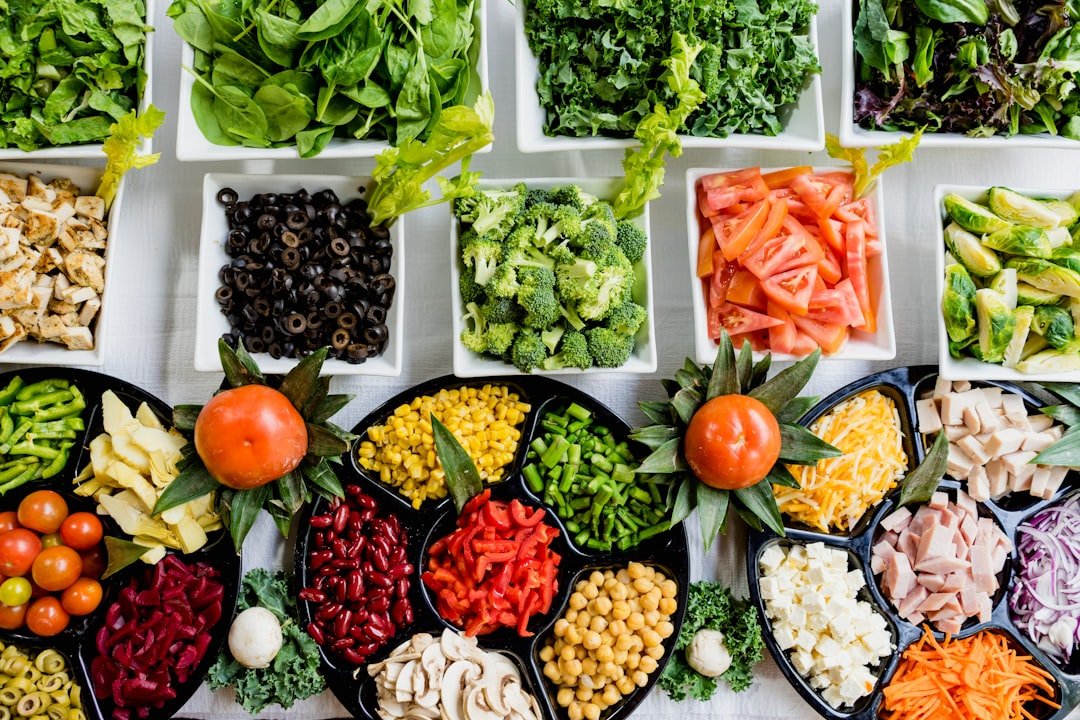
The Power of Fibre
You might have started to get the message that the way your body breaks down and absorbs sugar and carbs is crucial to how they affect you. And one of the biggest factors that affects this is a superstar called fibre!
Fibre is also a type of carbohydrate, but your body is unable to break it down and digest it, so it passes through your intestine intact (you might remember being told fibre is good for your bowels – this is why 😉).
This means foods that still contain fibre—like whole fruits, legumes, and whole grains—are digested MUCH more slowly. Fibre slows the breakdown and absorption of sugar, providing a gradual release of energy into your bloodstream. This helps your body manage sugar levels effectively and prevents spikes.
It does this through several ways:
- fibre creates a ‘mesh’ in our gut, slowing down how quickly the sugar can get into our blood
- fibre fills us up (meaning we eat less)
- fibre feeds our healthy gut bugs (which impact sugar metabolism in our body)
Fibre also has a huge number of other health benefits too, but we won’t get off topic here – however from a blood sugar perspective it’s a key player!
A deeper dive into how sugar and carbs can impact our health
(and what happens when our blood sugar levels spike)
So now we’ve explored what sugar and carbs are, and how they affect you, lets take a closer look at the health impacts of eating too many refined carbs or sugars.
As we discussed earlier, the problem with carbs and sugars essentially lies in how quickly sugar from certain foods enters your bloodstream. This is measured by the glycemic index (GI)—a scale that indicates how much a food raises blood sugar levels.
Foods with a high glycemic index—such as those low in fiber, heavily processed, or loaded with added sugars—cause blood sugar to spike rapidly when we eat them. When your blood sugar rises too quickly, your body struggles to keep up, leading to several negative effects:
- Cellular Damage: Spikes in blood sugar make your cells’ mitochondria (energy factories) to produce harmful stress molecules called free radicals. These travel around your body, causing oxidative stress, which can damage DNA, promote inflammation, and increase the risk of chronic diseases like heart disease and cancer.
- Accelerated Aging: High blood sugar contributes to the formation of advanced glycosylated end products (AGEs), which which accelerate aging and cause cell damage. Excess AGEs cause premature aging, skin wrinkles, and damage to organs, and are one of the main markers of biological aging!
- Insulin Spikes and Fat Storage: Rapid blood sugar increases trigger excessive spikes in insulin, which promotes fat storage in the liver. Over time, this can increase the risk of conditions like type 2 diabetes, metabolic syndrome, and fatty liver disease. Large blood sugar fluctuations can even contribute to overeating, which in turn can lead to unwanted weight gain. While it’s absolutely normal to get fluctuations in your blood sugar throughout the day, what we want to avoid is large repetitive spikes in blood sugar (especially outside the ‘normal’ ranges of 4-7.8mmol/L), as this is what can contribute to the health issues listed above.
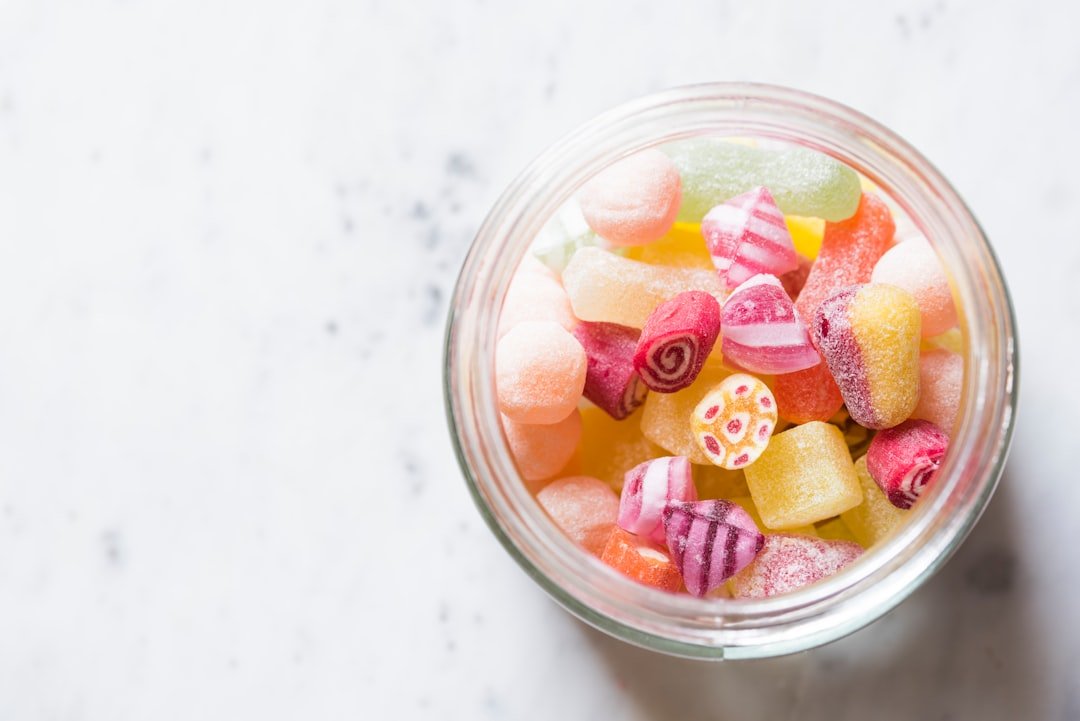
Health issues linked to excess sugar intake
And it’s not just about ageing and energy levels – excess sugar and refined carbs in our diet can lead to some serious health issues too!
- Weight gain and obesity: Chronic high sugar consumption, especially from sugary drinks and processed foods, has been strongly linked to weight gain and an increased risk of obesity. This can lead to various health problems, including type 2 diabetes and heart disease.
- Type 2 diabetes: Excessive sugar intake can also contribute to insulin resistance, a key factor in the development of type 2 diabetes. See our article about insulin resistance for more information
- Dental disease: Sugar is a major contributor to tooth decay and cavities. Frequent consumption of sugary snacks and beverages can erode tooth enamel and lead to oral health issues, as our saliva is not able to neutralise the acids produced by bacteria in our mouth that feed on sugar, which leads to plaque and dental caries. Diets high in free sugars are actually one of the biggest contributors worldwide to dental decay.
- Poorer heart health: High sugar intake has been associated with an increased risk of heart disease, as it can raise blood pressure, promote inflammation, and contribute to unhealthy cholesterol levels (in particular triglyceride cholesterol), as well as increasing the risk of metabolic syndrome (a major risk factor for heart disease and stroke). Read our in-depth article on heart health
- Mental health: There is emerging evidence suggesting a link between high sugar consumption and mental health issues such as depression and anxiety. Sugar may influence mood and lead to mood swings and energy crashes, as well as potentially affecting our sleep quality, and worsening inflammation (also linked with poorer mental health). To learn more, read our article on eating for better mental health
- Liver disease: Excess sugar is metabolised in the liver, where it can be converted into fat to be stored. If we regularly consume excess sugars, over time this process can lead to to non-alcoholic fatty liver disease (NAFLD), which can progress to more severe liver conditions.
The Truth About Carbs, Diabetes, and Fatty Liver Disease
Carbs often take the blame for type 2 diabetes and fatty liver disease, leading many people to believe they must cut carbs entirely. But is that necessary?
Not quite. While low-carb diets can help with short-term blood sugar control and weight loss, the real issue isn’t carbs themselves—it’s the type of carbs and how they’re balanced in your diet.
In fact carbohydrates (in whole foods) actually HELP our health in many ways! We’ll cover this more in the next section, but in essence whole food, higher-carb diets (like vegetarian or vegan diets) are actually associated with lower rates of type 2 diabetes and fatty liver disease. In fact, these diets can even help reverse these conditions, as supported by recommendations from groups like the Australian Diabetes Society.
The problem really lies with refined carbs and added sugars. Eating these in large amounts spikes insulin repeatedly, which can lead to insulin resistance. Over time, this resistance contributes to prediabetes, type 2 diabetes, and metabolic syndrome. Excess sugar and refined carbs also burden your liver. Any leftover glucose and fructose are stored as fat in the liver, which can eventually result in fatty liver disease and elevated triglyceride levels.
To learn more about insulin resistance, check out our article.
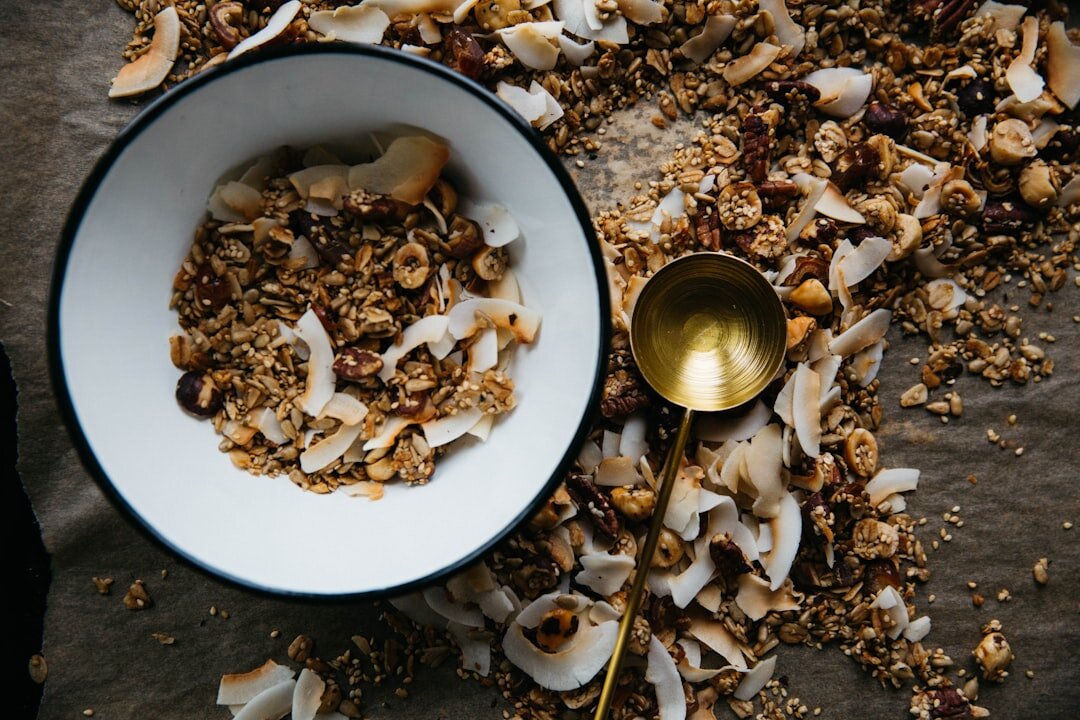
It’s Not All Bad News Though – Why Carbs and Sugars In Whole Foods Are Actually Good For Us
You might be reading this and wondering if you need to cut carbs out all together. The answer is a resounding NO!
In fact, did you know research shows that including carbohydrates and sugars in our diet in the form of WHOLE foods, has a number of health benefits, including:
- Sustained energy: Complex carbs provide a consistent source of energy throughout the day, helping you stay alert and focused.
- Heart health: The fibre content in whole grains, fruits, and vegetables can contribute to lower cholesterol levels and a reduced risk of heart disease.
- Digestive health: Fibre aids in digestion, preventing constipation and promoting a healthy gut.
- Weight management: Fibre-rich foods keep you feeling full for longer, curbing overeating and assisting in weight management.
- Nutrient powerhouses: Many complex carbs and foods containing intrinsic sugar (such as fruit) are packed with vitamins, minerals, and antioxidants that support overall health and immunity.
- Stabilized Blood Sugar: Whole grains release glucose gradually, preventing sudden spikes and crashes in blood sugar levels.
- Long-Term Health: A diet rich in complex carbs and fruit has been associated with a reduced risk of chronic diseases like type 2 diabetes and certain types of cancer.
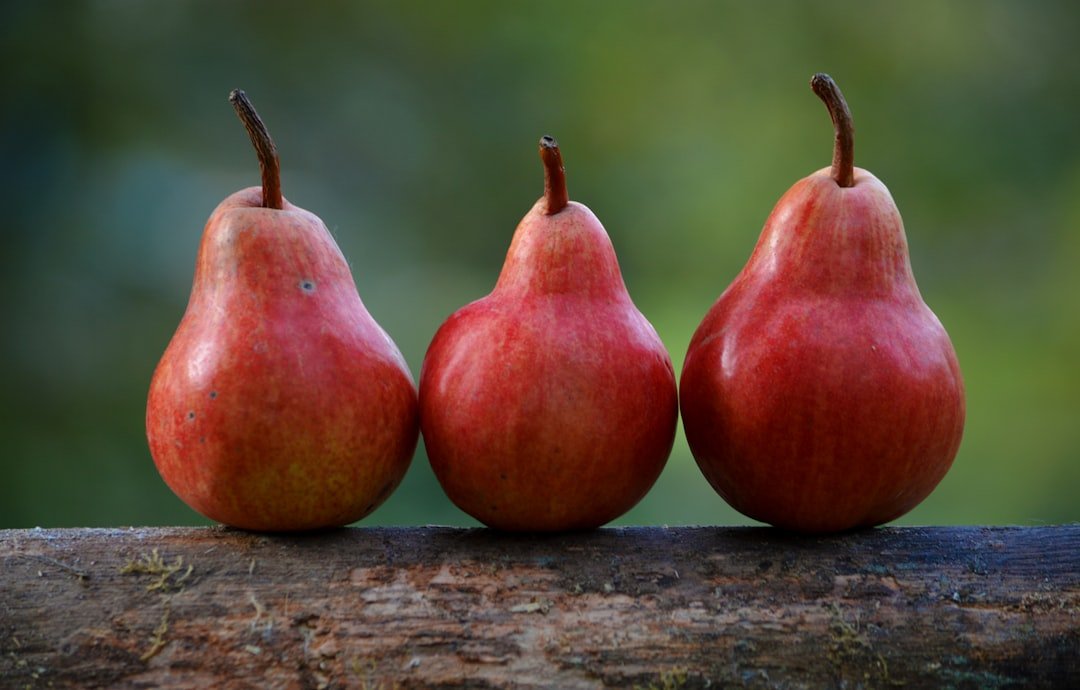
Let’s Talk About Fructose: Clearing Up the Confusion
Finally, you may have heard that fructose is bad for you – so lets do some myth busting right now.
Fructose, one of the three simple sugar molecules, is what gives fruit its natural sweetness. However, unlike glucose, our body can’t use fructose directly for energy. Instead, it’s converted into glucose by our liver.
Does this make fruit bad for us then?
Absolutely not! The key is in how fructose is packaged. Whole fruits come with fiber, which slows digestion and ensures the fructose is absorbed gradually. This gives your liver time to convert it into glucose at a manageable pace.
Beyond this, fruit offers incredible health benefits. It’s packed with essential vitamins, minerals, and antioxidants and is consistently linked with lower rates of chronic diseases like heart disease, diabetes, and certain cancers.
Refined fructose, however, is a completely different story. Found in ultra-processed foods and drinks—particularly soft drinks and high-fructose corn syrup (HFCS)—this form of fructose is added in large amounts to enhance sweetness.
When you consume foods high in added fructose, the following things can occur:
- Overload on the Liver: The liver is overwhelmed by the rapid influx of fructose and can’t process it all efficiently.
- Fat Storage: Excess fructose is converted into fat and stored in the liver, contributing to non-alcoholic fatty liver disease (NAFLD) and high triglyceride levels.
- Inflammation and Chronic Disease: High-fructose sweeteners are linked to obesity, inflammation, type 2 diabetes, and metabolic syndrome.
The bottom line on fructose?
Stick to whole fruits for their slow-releasing, nutrient-packed benefits. And when possible, avoid ultra-processed foods with added fructose or high-fructose corn syrup. Whole fruit supports your health, while added fructose in processed foods can strain your liver and increase the risk of chronic health problems.
Choose nature’s sweetness over processed shortcuts—and enjoy the health benefits along the way!
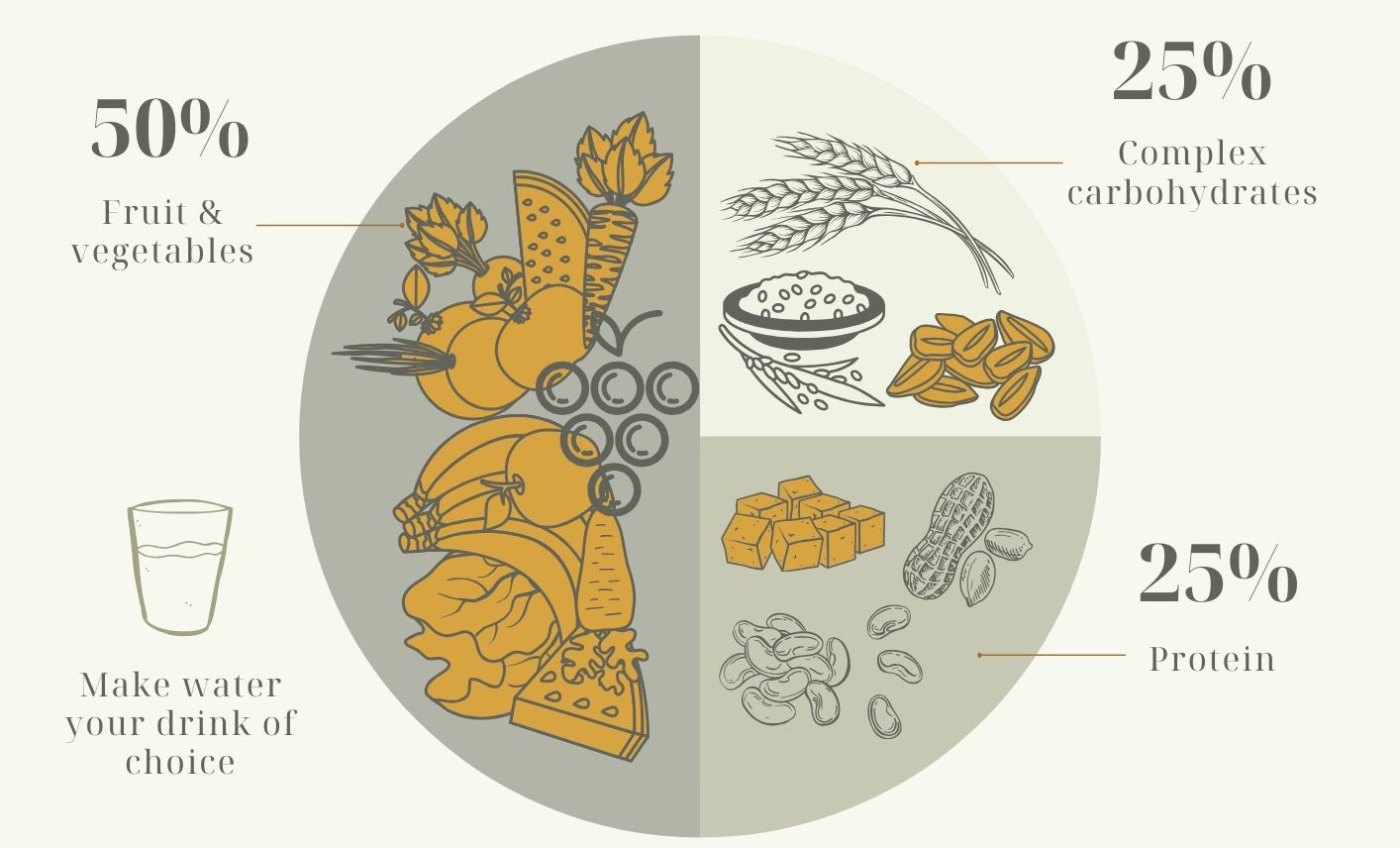
Bringing It Together – Our Top Tips For Healthy Blood Sugar
(And How to Make Carbs And Sugars Work for You!)
Instead of cutting carbs and sugar altogether, try these strategies for balanced blood sugar and better health:
Focus on Whole Foods
Choose whole fruits and grains, as they come naturally packaged with fiber. Fiber acts like a “mesh” in your gut, slowing down sugar absorption and preventing blood sugar spikes. For baking, fruits like bananas or applesauce are excellent natural sweeteners.
Remember: all added sweeteners—whether honey, maple syrup, or agave—are still forms of refined sugar. Stick with whole food-based sweeteners where possible. (P.S. Try our blueberry bran muffins for a tasty, blood sugar-friendly treat!)
Limit High-GI Foods and Be Mindful Of Portion Sizes
Avoid or reduce:
- Sugary drinks and fruit juices.
- Refined carbs like white flour, white rice, and heavily processed snacks.
These have very little fibre, and cause huge spikes in blood sugar. Avoid, or have in small amounts as treats.
Instead, opt for whole grains like brown rice, quinoa, or wholemeal pasta. Be aware that anything in excess is still not that good for us though, so try limit carbohydrate rich foods (grains, flours and starchy root veges) to 1/4 of your plate for balanced meals as per the graphic above. Make sure you include plenty of healthy protein and veges with meals too – it’s all about balance!
And if you can, try use unrefined flours (such as wholemeal flours), ground nuts or seeds (ie almond/coconut flour, LSA meal) or legumes (check out our black bean brownies here), in baking, as these are also packed full of other nutrients, and don’t generally spike blood sugar.
We have lots of whole food baking recipes in our Reboot and nutrition courses – that taste incredible, while being very low in added sugar!
Know Your Veges
While all veges are good for us, they can contain very different levels of nutrients which can affect our blood sugar in different ways
Starchy veges such as potato, kumara, and yam contain relatively high levels of sugar, because the type of carbohydrate in them (starch) is relatively easy for our body to digest
This means that while they have other health benefits, including being full of nutrients and fuel for our healthy gut bacteria, they should be counted as a carbohydrate rather than a vege. Include them in the carbohydrate section when balancing your plate.
As an aside, the starch in many foods such as potatoes and kumara becomes harder for our body to break down (lower GI) when the food is cooked and then cooled – meaning it is absorbed far more slowly – a useful trick to know if you’re watching your blood sugar levels!
Use Smarter Baking Ingredients
Swap refined flours for:
- Wholemeal flours.
- Ground nuts or seeds (like almond or coconut flour).
- Legume-based flours (think black bean brownies!).
These nutrient-dense options slow sugar absorption and pack in fiber, protein, and healthy fats. Check out our recipes in the Reboot and Nutrition courses for more ideas!
Don’t drink your sugars
Limit sweet drinks and fruit juices, because these have very little fibre, meaning they can cause huge spikes in blood sugar – a glass of orange juice can contain as much free sugar as a fizzy drink! They can also often contain the total recommended daily sugar intake in one serving 😯
Avoid, or have them in small amounts as treats, ideally combined with a balanced meal to reduce your blood sugar response.
Eat Foods in the Right Order
Start meals with fiber-rich foods like vegetables and legumes. Follow up with protein and healthy fats before eating carbs. This sequencing can slow digestion and reduce blood sugar spikes.
Pro Tip: Drinking 1 tablespoon of apple cider vinegar diluted in water before meals may also help stabilize blood sugar too, reducing blood sugar spikes by up to 25% in some studies!
Rethink Breakfast
Check the nutrition label, and aim for less than 10g of sugar per 100g when choosing breakfast options. 5g of sugar equals roughly 1 teaspoon.
Many cereals are loaded with refined carbs and added sugar—sometimes containing multiple teaspoons per serving!
Instead, start your day with whole grains, protein (from nuts, seeds, or yogurt), and fiber-rich veggies or legumes. Need ideas? Check out our Reboot or Nutrition courses for breakfast recipes!
Movement is key
Exercise, even light activity, helps muscles “mop up” glucose from your blood with little or no need for insulin. Just 10 minutes of walking, a quick home workout, or even dancing around the house can make a big difference!
Get enough sleep and be aware of hidden causes of blood sugar spikes
Lack of sleep and high levels of stress are common hidden causes of blood sugar spikes. Aim for seven to nine hours of quality sleep each night, and keep stress at manageable levels wherever you can.
Some medications can also affect blood sugar levels, including steroids, some antidepressants, diuretics, statins, or birth control. Hormone changes through life impact blood sugar too due to their impact on insulin sensitivity – particularly towards the end of a womans menstrual cycle (the week before her period); during pregnancy; and through the peri/menopause transition. If you are concerned about any of these issues please talk to your doctor.
We hope you’ve enjoyed this article, and feel empowered and informed about sugar and carbs now!
Like everything we teach in nutrition, its all about balance, looking at the overall picture, and aiming to fill your diet with whole, mostly plant foods. This doesn’t mean being scared of foods, or restricting them – but it’s important to keep treats as treats, rather than everyday food!
What we feed our body determines so much of our health and well-being, and if we nourish our body and mind, it really does pay off. If you’d like to know more, please check out our Reboot and nutrition modules – we’d love to see you there ❤️


